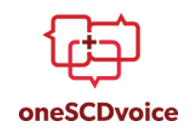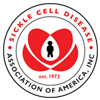Trusted Resources: Evidence & Education
Scientific literature and patient education texts
Chronic and acute anemia and extracranial internal carotid stenosis are risk factors for silent cerebral infarcts in sickle cell anemia
source: Blood
year: 2015
authors: Bernaudin F, Verlhac S, Arnaud C, Kamdem A, Vasile M, Kasbi F, Hau I, Madhi F, Fourmaux C, Biscardi S, Epaud R, Pondarré C
summary/abstract:Early transcranial Doppler (TCD) screening of the Créteil sickle cell anemia (SCA)-newborn cohort, and rapid initiation of transfusion programs, resulted in successful prevention of overt strokes, but a high cumulative risk of silent cerebral infarcts (SCI) remained, suggesting that TCD screening does not identify all patients with SCA at risk for SCI. We hypothesized that episodes of hypoperfusion/hypoxia, as observed during acute chest syndromes or acute anemic events (AAE), and extracranial internal carotid artery (eICA) stenoses, detectable via submandibular Doppler sonography and cervical magnetic resonance angiography (MRA), could also be risk factors for SCI. This study includes 189 stroke-free patients with SCA from the Créteil newborn cohort (1992-2010) followed longitudinally by magnetic resonance imaging/MRA, including cervical MRA at the last assessment. All patients with abnormal TCD and/or intracranial stenoses were placed on a transfusion program. Mean follow-up was 9.9 years (range, 2.2-19.9 years; 1844 patient-years). Annual rates of clinical events were calculated. The cumulative risk for SCI was 39.1% (95% confidence interval [CI], 23.5%-54.7%) by age 18 years, with no plateau. We confirm that baseline hemoglobin level lower than 7 g/dL before age 3 years is a highly significant predictive risk factor for SCI (hazard ratio, 2.97; 95% CI, 1.43-6.17; P = .004). Furthermore, we show that AAE rate (odds ratio, 2.64 per unit increase; 95% CI, 1.09-6.38; P = .031) and isolated eICA stenosis (odds ratio, 3.19; 95% CI, 1.18-8.70; P = .023) are significant and independent risk factors for SCI.
organization: Centre Hospitalier Intercommunal, Créteil, University Paris XIIDOI: 10.1182/blood-2014-09-599852
read more full text
Related Content
-
Cardiovascular Complications and Risk of Death in Sickle-cell DiseaseIn sickle-cell disease, a point mutation...
-
Individualized pain plans significantly reduce hospitalization in pediatric sickle cell patients with vaso-occlusive...Background: Vaso-occlusive crisis (VOC)...
-
Gut Microbiome Translates Stress Into Sickle Cell CrisesA new study shows how chronic psychologi...
-
Crizanlizumab designated FDA breakthrough therapy for potential in vaso-occlusive crisis preventionCrizanlizumab (SEG101), Novartis‘ inve...
-
Sickle Cell and Young Stroke SurvivorsSickle Cell & Young Stroke Survivors...
-
New Research Suggests SANGUINATE™ Reduces the Number of Sickled Red Blood Cells in Patients with Vaso-Occlusive Cr...SANGUINATE™, the only investigational ...
-
Pain Criseshttp://68.media.tumblr.com/c7875137ded96...
To improve your experience on this site, we use cookies. This includes cookies essential for the basic functioning of our website, cookies for analytics purposes, and cookies enabling us to personalize site content. By clicking on 'Accept' or any content on this site, you agree that cookies can be placed. You may adjust your browser's cookie settings to suit your preferences. More Information
The cookie settings on this website are set to "allow cookies" to give you the best browsing experience possible. If you continue to use this website without changing your cookie settings or you click "Accept" below then you are consenting to this.




 +myBinder
+myBinder
